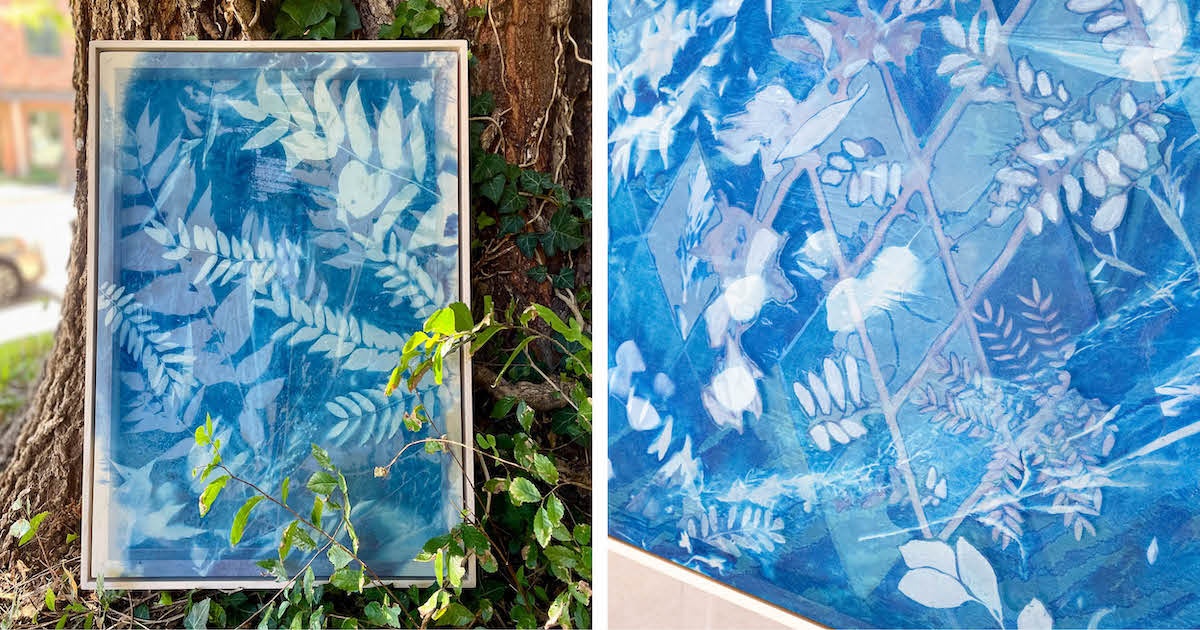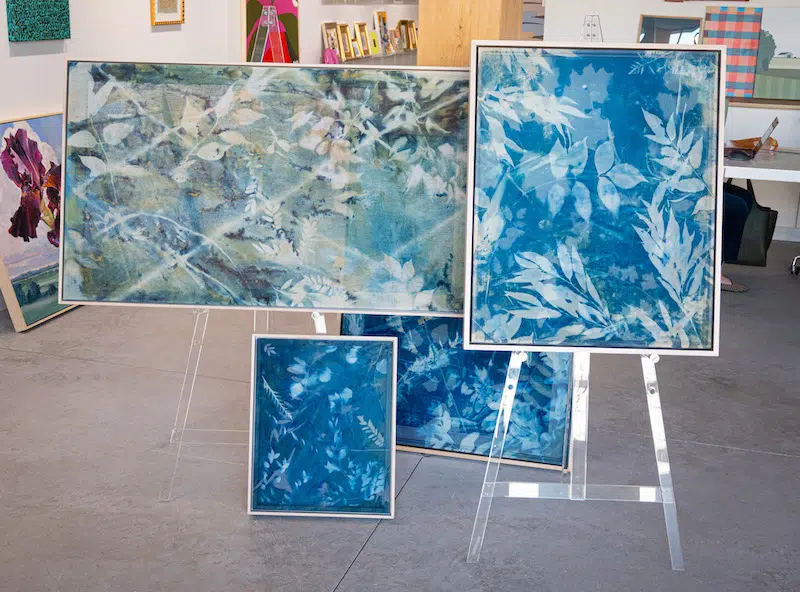
During the summer months, Kristen Abbott likes to go on what she calls “leaf walks.” While wandering around the stream near her Colorado home, Abbott gathers leaves and wildflowers with one goal in mind: creating a cyanotype. The magic happens beneath the bright Colorado sun, after the artist has collected everything she needs for her composition. Anywhere from ten minutes to several hours later, her cyanotype is finally complete, revealing translucent, natural forms set against deep blue backdrops.
As a multidisciplinary artist, it should come as no surprise that Abbott finds herself drawn to cyanotypes. Cyanotypes, much like the other media with which she works, are also experimental, forcing the artist to cede “control and repetition” in favor of “unpredictability and texture.” The resulting canvases reflect that sense of intuition, where leaves and other organic materials transform into sheer, fluid outlines that continually layer upon themselves. Though abstract, Abbott’s cyanotypes still bear traces of her surrounding landscape, showcasing Colorado’s seasonal shifts and plants in such a way that remains universal.
“Living in Boulder, I’m surrounded by trees, streams, and mountains—it’s impossible not to be influenced by that landscape,” Abbott explains. “Nature reconnects me to something bigger than myself, and I hope my art can do the same.”
If nature is varied and infinite, so, too, is Abbott’s practice. Cyanotypes aren’t the only things she produces, and she often gravitates toward unconventional tools like brooms, scrapers, and kitchen utensils to generate peculiar visual effects. The stylistic range of artwork offered through her gallery, Liz Lidgett Gallery + Design, only exemplifies this further.
“I love building surprise and unpredictability into my process,” she says. “I want people to feel the urge to reach out and touch the surface, to wonder how it was made. A broom dragged through a thick layer of paint, for example, can create movement and rhythm.”
My Modern Met spoke with Abbott about her multidisciplinary practice, her relationship with nature, and the process behind creating her leafy cyanotypes. Read on for our exclusive interview with the artist.
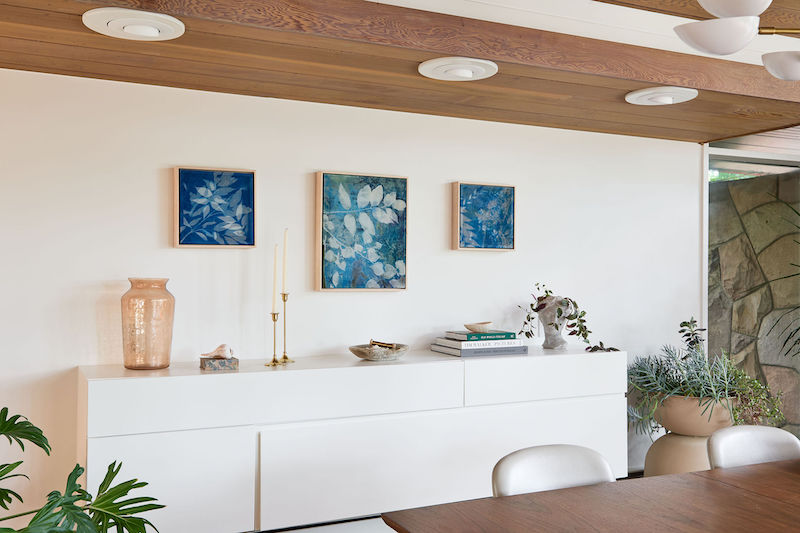
What does it mean to you to be a multidisciplinary artist?
At my core, I’m a painter—everything I make circles back to that foundation. But to me, being multidisciplinary means I can draw from a full creative toolbox to tell deeper, more layered stories. Over the past five years, the cyanotype process has become a key part of my practice. Though it’s rooted in photography, I approach it like a painter—favoring texture, unpredictability, and experimentation over control or repetition.
I view each material as a collaborator, not just a tool. I’m less interested in traditional methods and more curious about what happens when mediums meet and evolve together. Lately, I’ve been leaning into curating environments. I don’t want my work to be just something people hang on their wall—I want it to shape a space, to create a feeling. I see my practice expanding into immersive, intentional spaces that invite people to fully experience the presence and power of art.
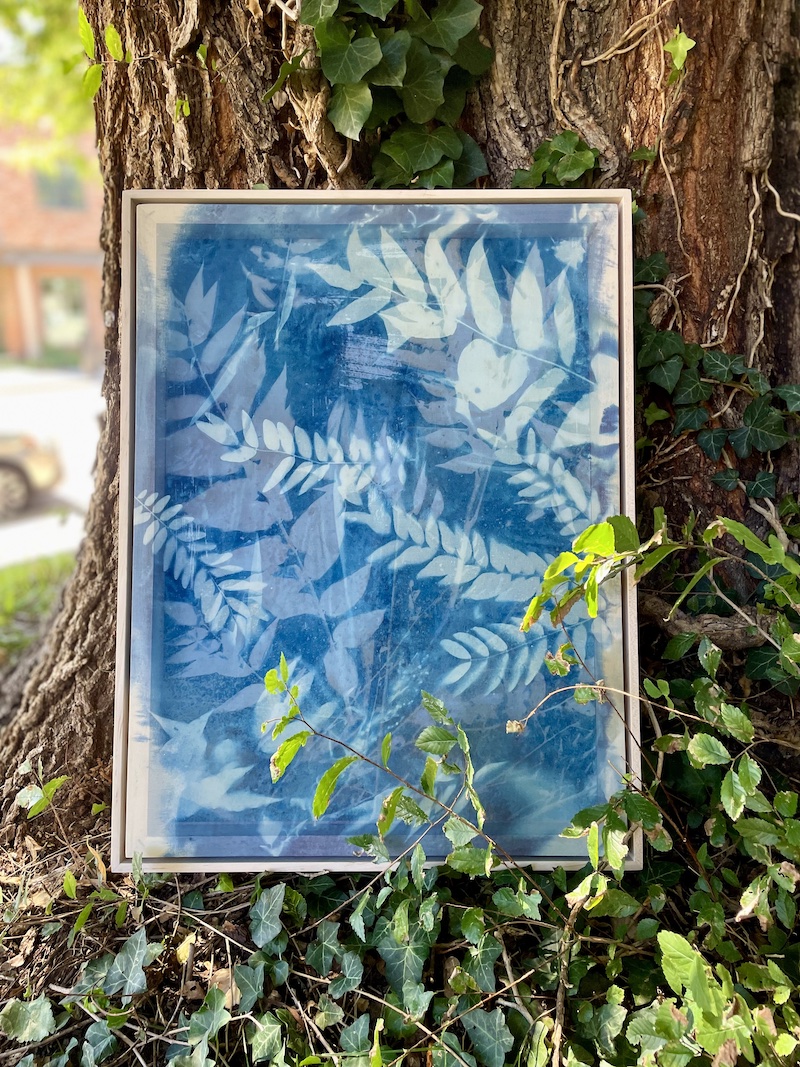
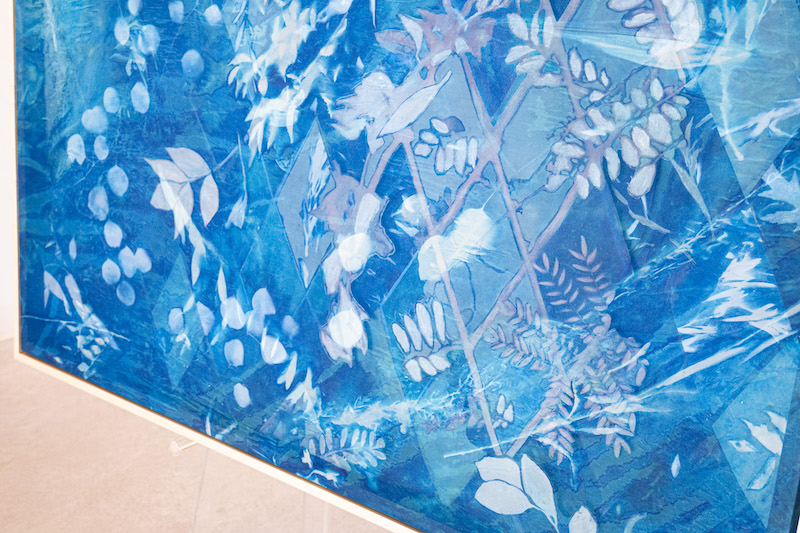
Is there any specific medium that you find yourself particularly intrigued by out of those that you work with?
I love working in rhythm with the seasons. In the cooler months, I’m in the studio making layered, textural abstract paintings. When summer arrives, I move outdoors and lean into cyanotypes—collaborating with the sun to create ephemeral prints. That seasonal shift keeps me energized and brings a natural cadence to my practice and the mediums that I use.
I like introducing new surfaces, tools, or techniques to see how they interact with what I already know. For me, it’s about staying in an ongoing, curious relationship with each medium—letting it change with me, and discovering new possibilities in familiar forms.
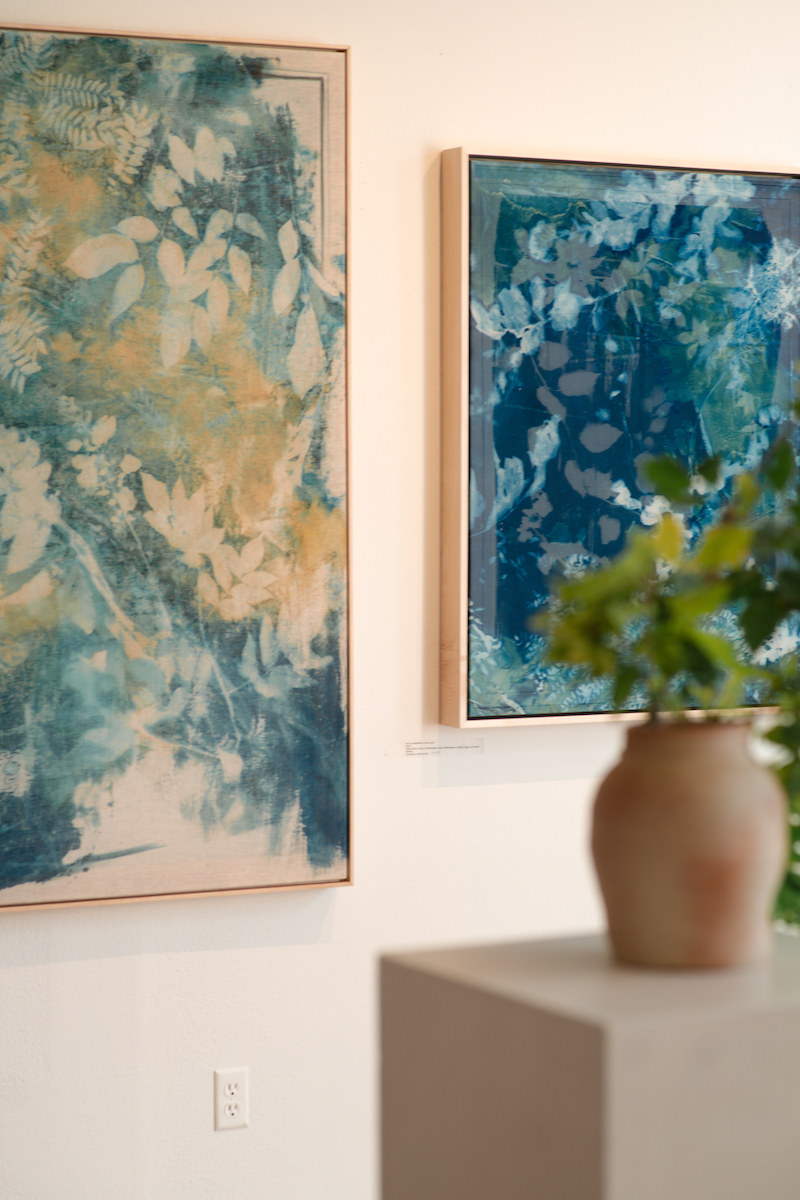
What originally compelled you about naturalistic and organic imagery?
Living in Boulder, Colorado, I’m surrounded by trees, streams, and mountains—it’s impossible not to be influenced by that landscape. When I’m in nature, I feel calm, present, grounded and also filled with wonder. That’s the feeling I’m trying to channel into my work.
In our busy, overstimulated lives, it’s easy to lose touch with that sense of awe. Nature reconnects me to something bigger than myself, and I hope my art can do the same—bringing a quiet, grounded beauty into the spaces where people live, rest, and return to themselves.
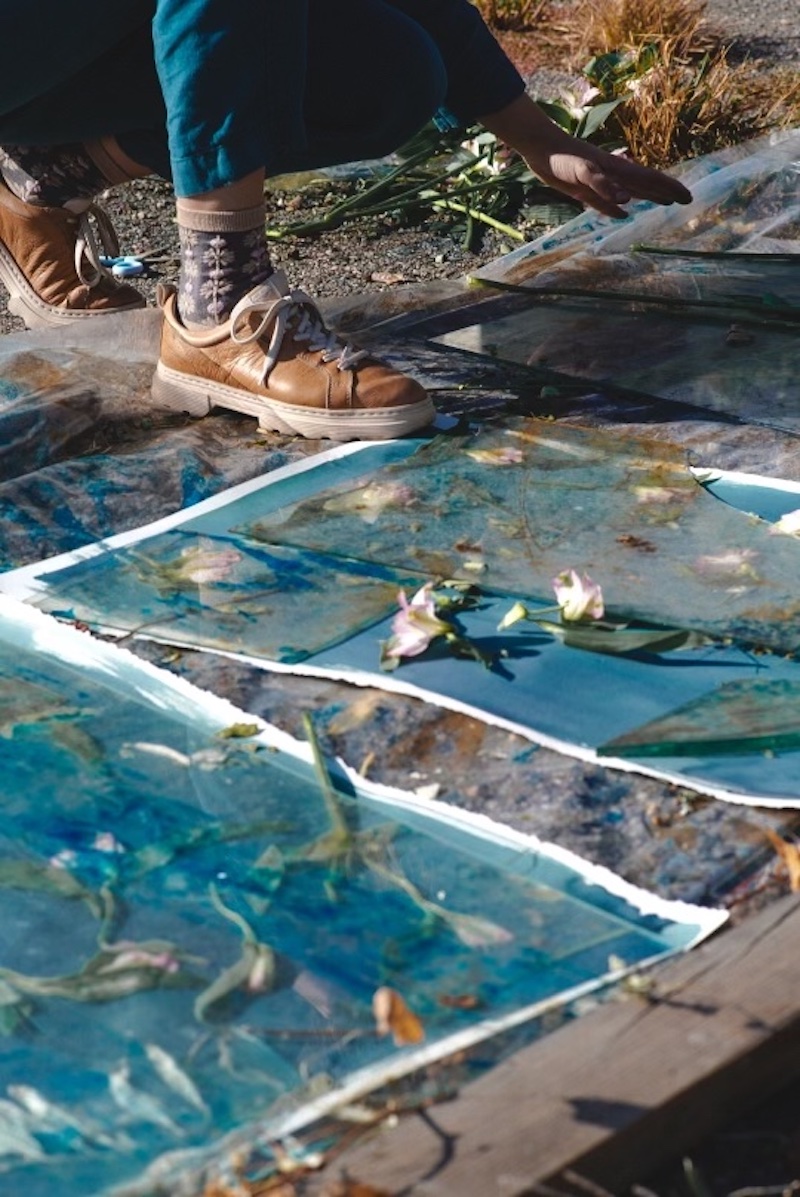
What is the process of creating one of your leafy cyanotypes?
The cyanotype process begins at night, in my makeshift darkroom, usually my garage, where I coat paper, silk, linen, or wood with a light-sensitive emulsion. The next morning, I go on what I call a Leaf Walk, gathering leaves and wildflowers from along the stream near my home.
Then I take everything outside to expose in the bright Colorado sun, letting nature work its magic. Exposure time varies—anywhere from ten minutes to several hours—depending on the light, the materials, and frankly, what else the day holds.
Once exposed, the piece is rinsed in water and left to dry. From there, I might add layers, edits, or other alterations before it’s mounted or framed. It’s a physically demanding process—done mostly outdoors in the heat of summer. There are weeks of blue-stained hands, sweat, and care poured into every piece. But it’s worth it. Each one feels like a true collaboration between me, the elements, and the landscape I live in.
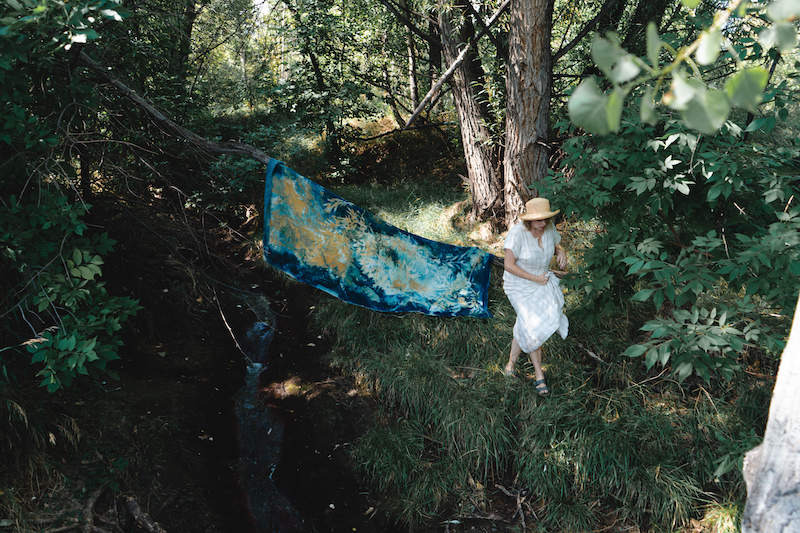
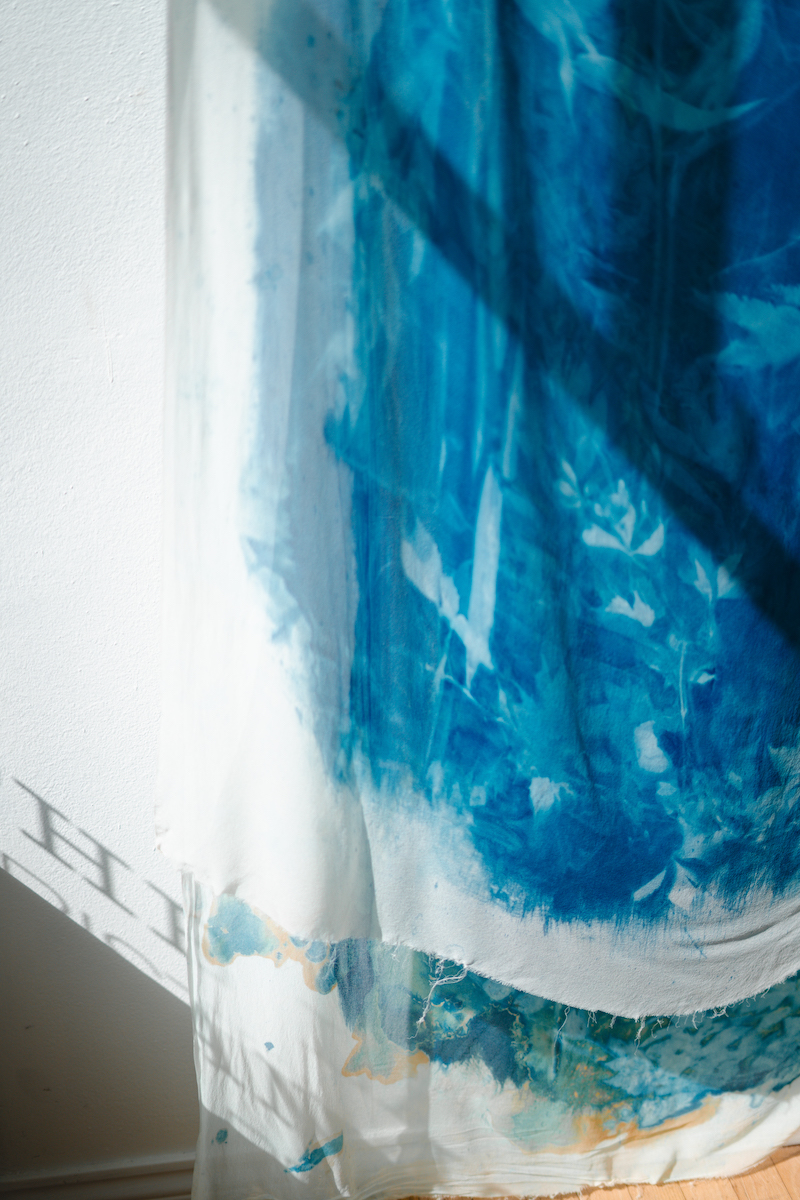
You have previously worked with such tools as brooms, scrapers, and kitchen utensils. Why do you gravitate toward these tools, and how do you incorporate them throughout your art?
I love building surprise and unpredictability into my process—it keeps things fresh. If I already know exactly how a piece will turn out, I lose interest. Using unexpected tools, like something from the kitchen drawer or hardware aisle, helps me stay connected to curiosity and play. It keeps me from taking the work (or myself) too seriously.
I’m especially drawn to texture. I want people to feel the urge to reach out and touch the surface, to wonder how it was made. A broom dragged through a thick layer of paint can create movement and rhythm; a silicone whisk dipped in ink can leave gestural, unexpected marks. These tools are ways of breaking with safe and predictable mark making, inviting experimentation, and creating a physical record of the piece’s evolution.
Ultimately, I hope they prompt the viewer to slow down, look closer, and ask questions—about the process, the materials, and the layers of story embedded in the surface.
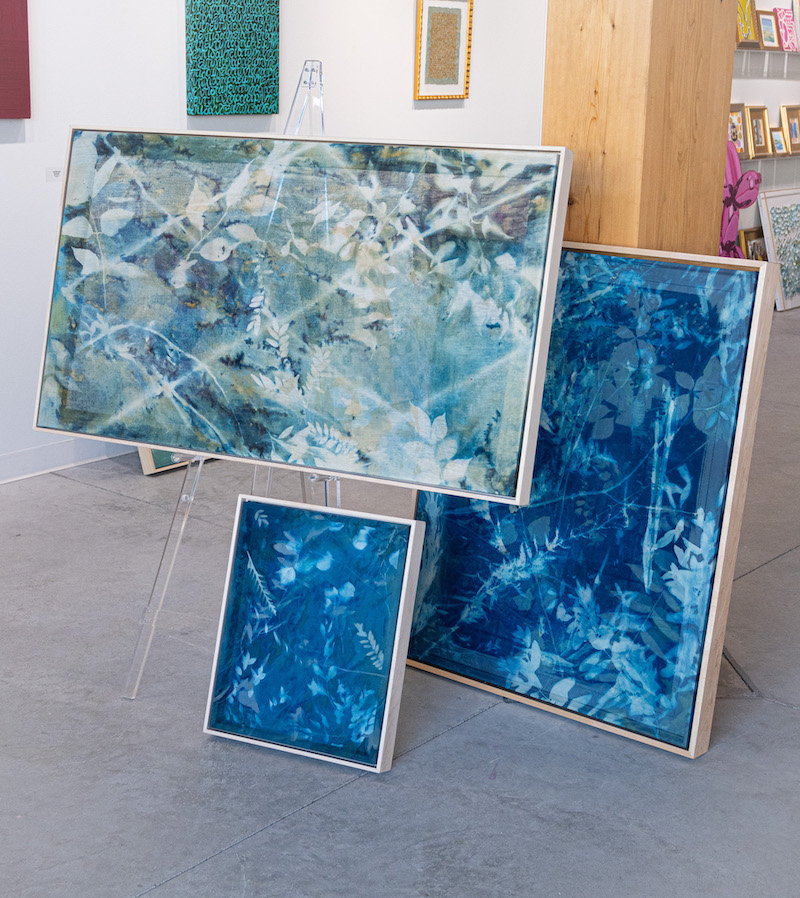
How would you describe your artistic practice to someone who has never encountered it before?
My practice is rooted in curiosity and a deep desire to create beauty—work that invites people to pause, feel, and wonder. While I’m inspired by the natural world—especially the abundance of leaves, flowers, and textures here in Colorado—I’m ultimately interested in evoking something more internal: a sense of peace, presence, and quiet awe.
Whether it’s a large-scale, textural abstract painting or a layered silk cyanotype, I hope my work gives people a moment to breathe deeply, to look with curiosity, and to feel something that resonates beneath the surface.
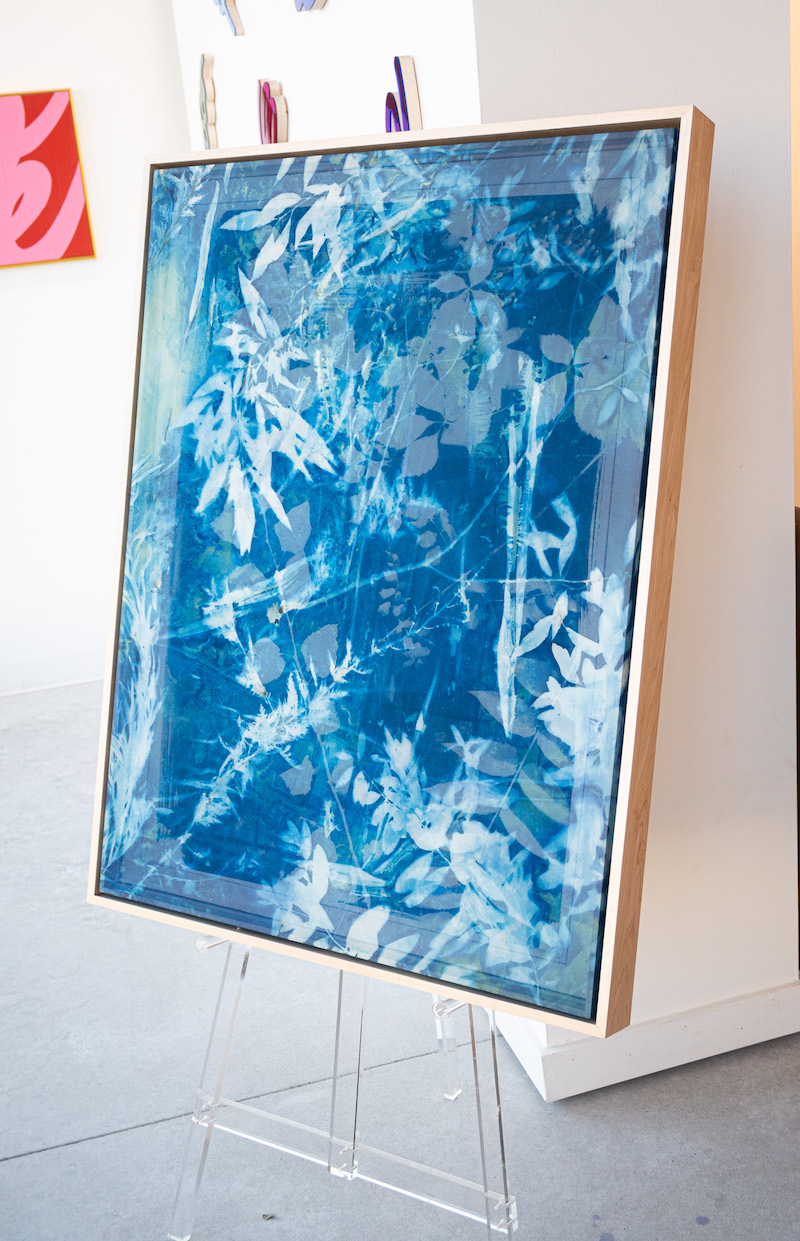
Do you have any exciting projects coming up?
Yes! I was honored to receive the Sharon Art Prize this year, along with a grant to cultivate a community flower cutting garden alongside a new body of work. The culmination will be an immersive exhibition open to the public at my studio and garden in Boulder on October 4th. The show will guide visitors through the emotional and sensory seasons of a garden—mirroring the cycles of human experience. I’m creating new large-scale cyanotypes on silk and linen, and also curating work by other local artists to explore themes of growth, loss, renewal, and belonging. I can’t wait to share it.
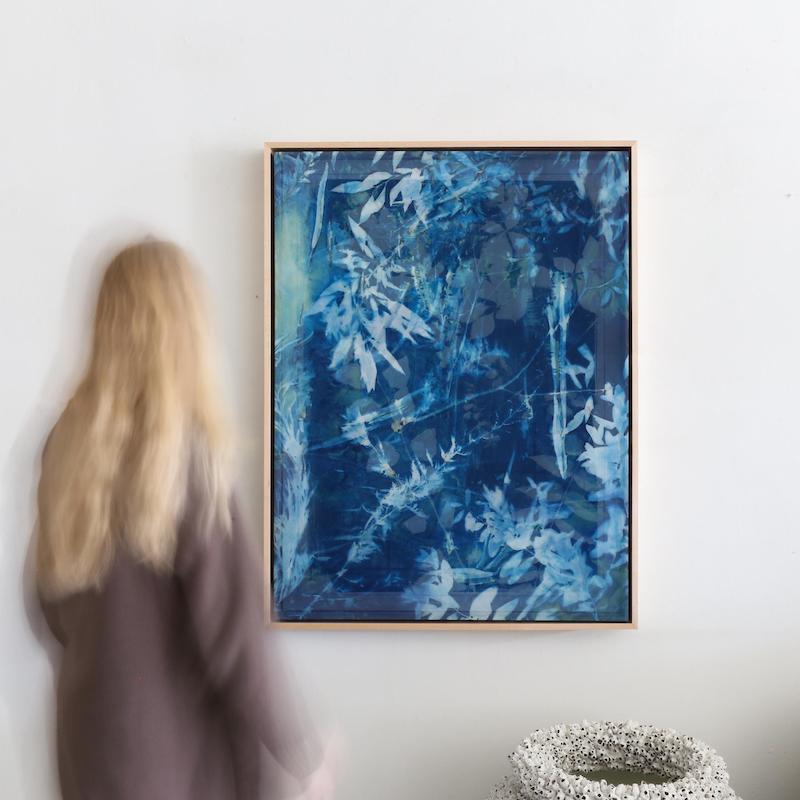
Kristen Abbott: Website | Instagram
Liz Lidgett Gallery + Design: Website | Instagram
My Modern Met granted permission to feature photos by Liz Lidgett Gallery + Design.
Related Articles:
Artist Creates Textured Landscapes by Wrinkling Cyanotype Paper
Innovative Floral Arrangements Test the Limits of How and Where Flowers Can Thrive
